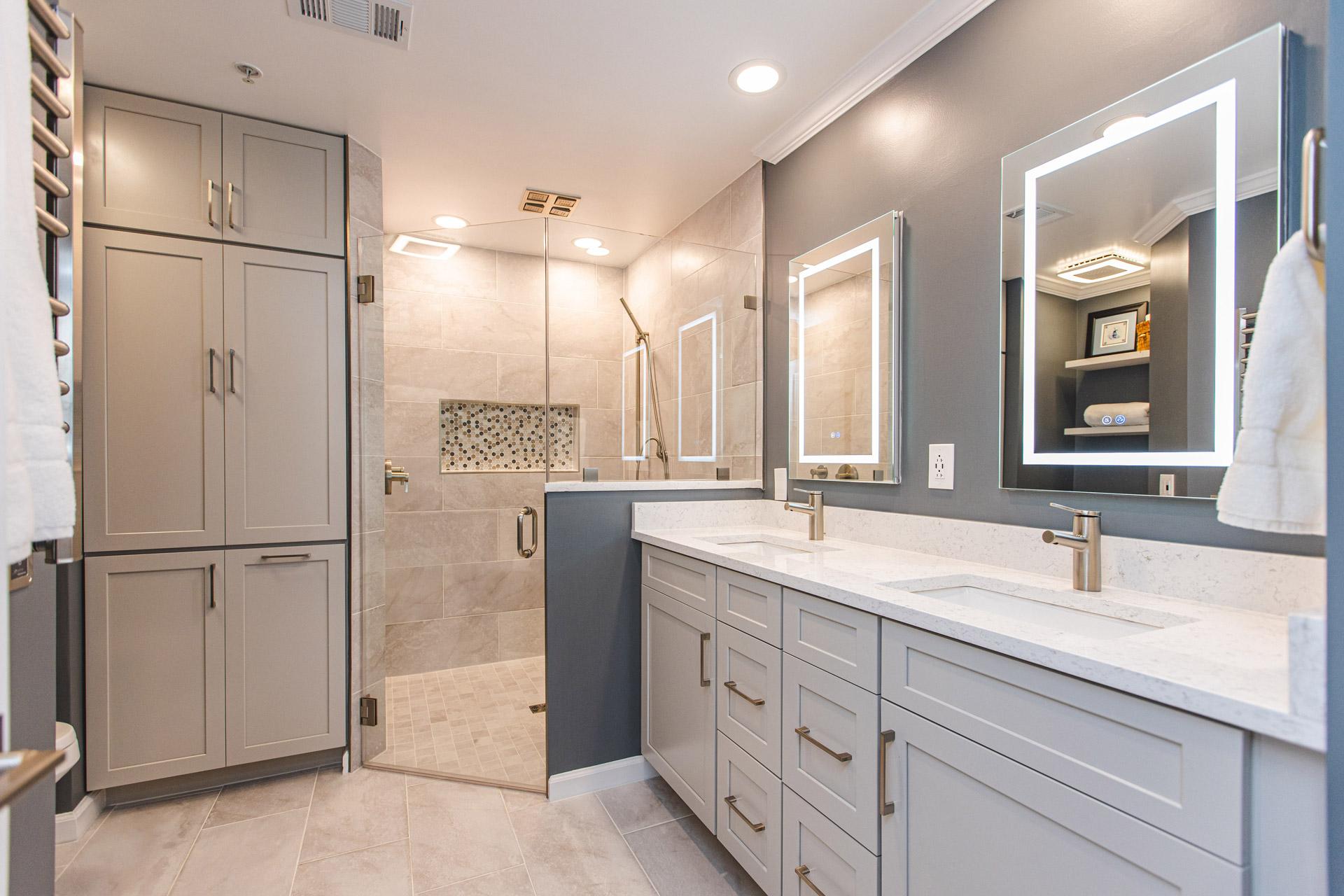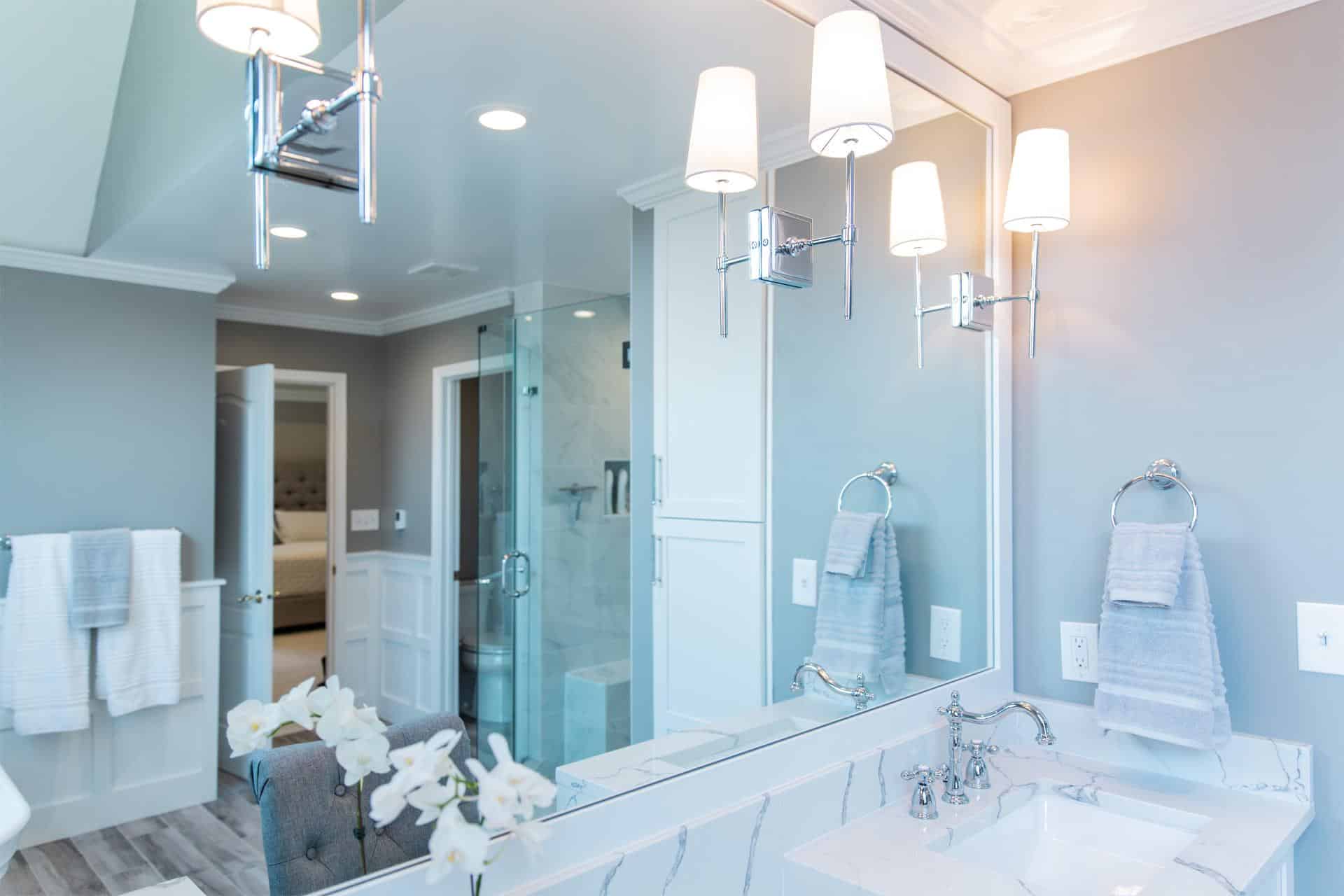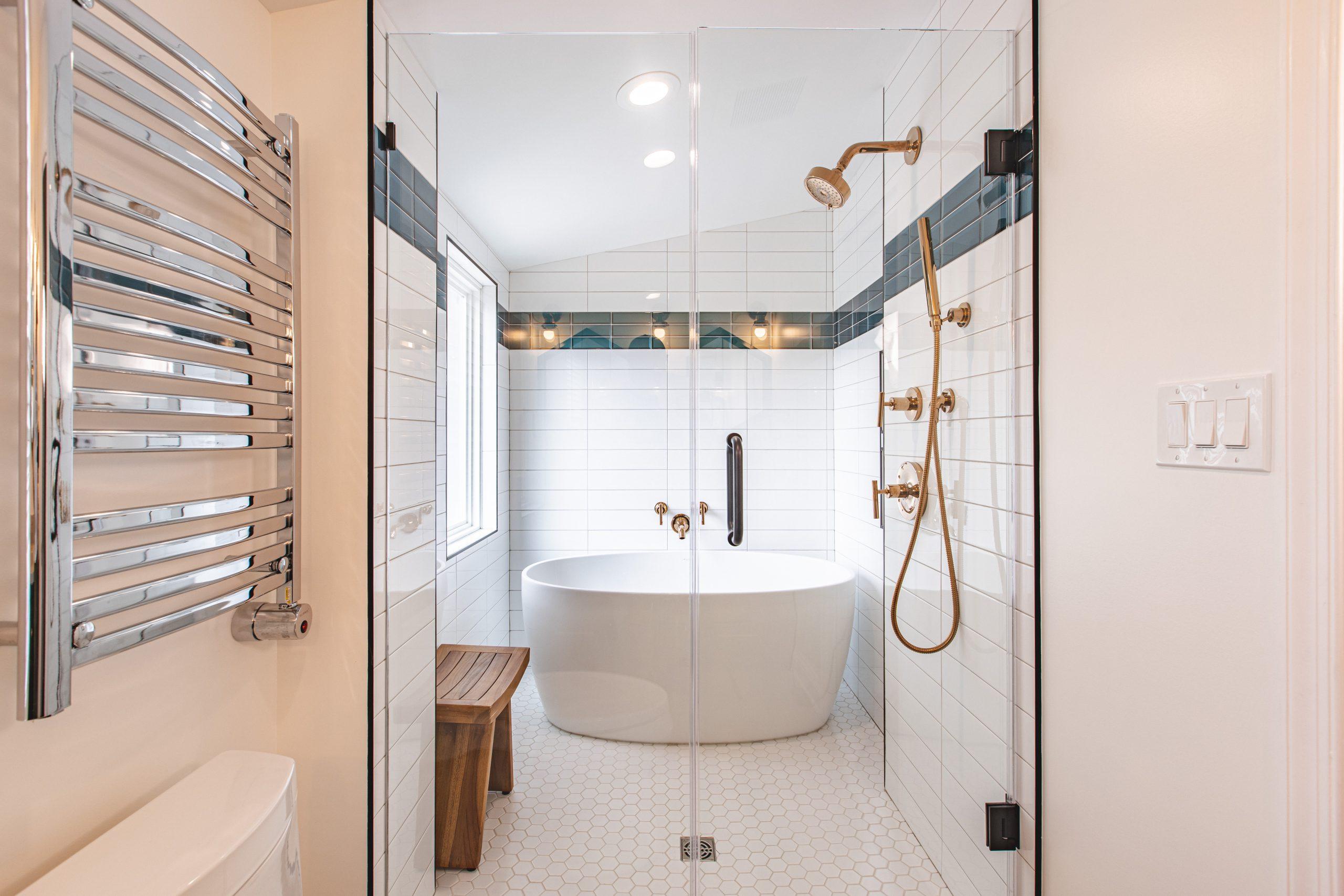The bathroom is one of the most significant spaces in any home. It’s where we start and end our days, and where we spend time getting ready for work or school. As such, it’s important to create a space that is both functional and visually appealing. One way to achieve this is through proper lighting. In this article, we will explore the importance of proper lighting in bathroom design, the different types of lighting, and how to achieve the ideal lighting for your bathroom.
Why is Lighting Important in Interior Design?
Lighting is an essential element of interior design. It has the power to transform a space, creating a mood, atmosphere, and ambiance that can influence our emotions, behaviors, and overall experience of a room. Lighting can highlight specific features of a space, create contrast and shadows, and provide necessary illumination for everyday tasks.
In bathroom design, lighting plays a particularly crucial role in creating a functional and comfortable space. Proper lighting can help ensure safety, particularly in areas like the shower and around the vanity, where accidents can easily occur. It can also enhance the aesthetic of the space, highlighting design elements and creating a sense of warmth and tranquility.
What Lighting Should You Have in a Bathroom?
There are three main types of lighting that are commonly used in bathroom design: ambient, task, and accent lighting.
Ambient lighting
Ambient lighting provides overall illumination for a room and is typically achieved through a central ceiling fixture, such as a chandelier, flush-mount fixture, or recessed lighting. This type of lighting can help create a sense of warmth and intimacy, particularly when combined with softer, warmer light bulbs.
Task lighting
Task lighting, as the name suggests, is used to provide illumination for specific tasks, such as shaving, applying makeup, or brushing teeth. It is typically provided through a vanity light fixture, which is installed above or on the sides of the mirror.
Accent lighting
Accent lighting is used to highlight specific design elements or features of a space, such as artwork, plants, or architectural details. This type of lighting is typically achieved through wall sconces, recessed lighting, or track lighting.
How Do You Light a Bathroom Properly?
To achieve proper lighting in a bathroom, it’s important to consider both the functionality and aesthetics of the space. Here are some tips to help you light your bathroom properly:
- Use a combination of ambient, task, and accent lighting to create a balanced and layered lighting scheme.
- Install dimmer switches to allow for flexibility in the level of lighting throughout the day.
- Use warm light bulbs to create a cozy and inviting atmosphere.
- Ensure that there is adequate lighting around the vanity area, where most grooming tasks take place.
- Use waterproof lighting fixtures, particularly in the shower or bath areas.

Is Up Lighting or Down Lighting Better in a Bathroom?
When it comes to the direction of lighting in a bathroom, both up-lighting and down-lighting can be effective, depending on the desired effect. Uplighting can create a sense of warmth and intimacy, particularly when used with a warm light bulb. It can also highlight design elements like plants or artwork. Down lighting, on the other hand, is particularly effective for task lighting, such as illuminating the vanity area. When combined with a dimmer switch, down lighting can create a more relaxing and calming atmosphere.
What is the Ideal Lighting Style to Simulate Natural Light in a Bathroom?
Natural light is the most desirable type of light in any space, particularly in the bathroom, where we often perform tasks that require good visibility. The ideal lighting style to simulate natural light in a bathroom is a combination of ambient, task, and accent lighting. To achieve this effect, install a central ceiling fixture that provides even and diffused light throughout the space, as well as task lighting around the vanity area to provide focused illumination for grooming tasks. You can also consider adding accent lighting to highlight design features, such as plants or artwork.
What is the Recommended Value of Illumination in a Bathroom?
The recommended value of illumination in a bathroom is between 75- and 100-foot candles. This provides adequate lighting for everyday tasks, such as grooming and getting dressed. However, it’s important to note that the ideal level of illumination can vary depending on the size of the bathroom and the specific lighting needs of the space. In general, it’s best to consult with a professional lighting designer or electrician to determine the ideal illumination value for your specific bathroom.
How Much Light is Enough for a Bathroom?
The amount of light that is enough for a bathroom depends on the size of the space, the type of lighting being used, and the specific needs of the room. As mentioned earlier, the recommended value of illumination for a bathroom is between 75- and 100-foot candles. However, it’s important to consider the specific lighting needs of the space and to ensure that there is adequate lighting around the vanity area, shower, and toilet.
What Color Light is Best for Bathrooms?
The color of light that is best for bathrooms is typically warm white or soft white. These light bulbs provide a cozy and inviting atmosphere and are particularly effective when used with a dimmer switch. It’s important to avoid using cool or daylight bulbs, which can create a harsh and uninviting atmosphere.
Is it a Good Idea to Have a Dark Bathroom?
While some people may prefer a darker atmosphere in their bathroom, it’s generally not a good idea to have a dark bathroom. Adequate lighting is important for safety and functionality, particularly in areas like the shower or around the vanity, where accidents can easily occur. A lack of lighting can also create a gloomy and unwelcoming atmosphere, which is not ideal for a space where we spend time getting ready for the day.
Do You Need a Special Type of Light for a Bathroom?
While you don’t necessarily need a special type of light for a bathroom, there are certain considerations that should be made when choosing the lighting for this space. It’s important to choose waterproof or water-resistant lighting fixtures, particularly in areas like the shower or bath. You may also want to consider using dimmer switches, which can provide flexibility in the level of lighting throughout the day. Additionally, it’s important to choose the right type of bulb, such as warm or soft white, to create a cozy and inviting atmosphere.
Conclusion
In conclusion, proper lighting is essential in bathroom design, both for safety and aesthetics. By ensuring that there is adequate lighting, you can create a space that is both functional and visually appealing. When choosing the lighting for your bathroom, it’s important to consider the specific needs of the space.

